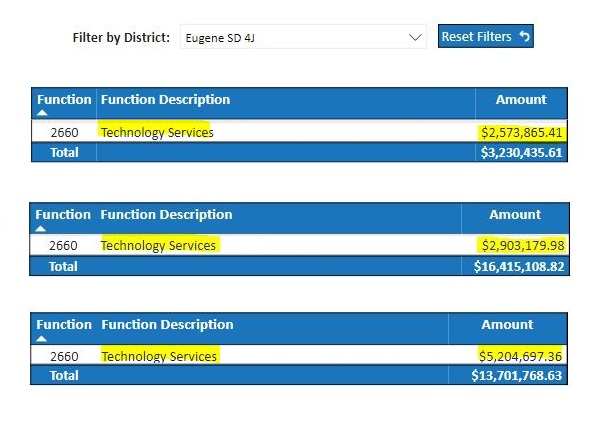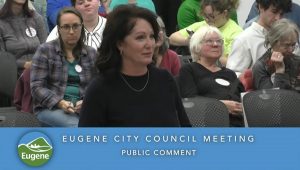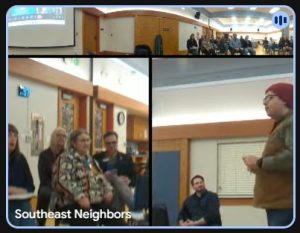4J misspent pandemic funds on facilities, tech instead of tutoring, instruction
4 min read
by Marty Wilde
Recent data show that Oregon’s state government and local school boards continue to misspend pandemic education funds, making our children among the slowest in the nation to recover from their learning loss.
While I’ve never been a fan of standardized testing to judge the progress of individuals, they do provide us good data for large groups of students. It isn’t a pretty picture. Oregon now ranks above average in per student spending. Despite this, Oregon ranks 35th in math scores, 36th in reading scores, and 38th in graduation rate.
Oregon ranks close to the bottom in required number of contact hours with students, at between 160 and 165, depending on grade level and how Oregon’s hour requirements are converted to days, compared to a national average of 179 days.
While it is easy to blame the pandemic, testing data show that Oregon student’s math achievement scores were the only ones in the country to continue to fall after the end of the pandemic. Further, Oregon was one of only 10 states to lose additional ground in reading scores.
The reason for the initial large deficit is straightforward – Oregon was one of the last states to return to in-person instruction. The degree of learning loss correlates strongly with the number of days of missed in-person instruction.
It takes a deeper dive into the data to figure out why Oregon hasn’t recovered as much as other states since the pandemic. Taking a look at pandemic spending, one reason stands out – in the most recent wave of spending, that covering the post-pandemic period, Oregon school districts spent almost as much money on buildings and infrastructure as they did on K-5 instruction and more than twice as much as they did on high school instruction.
The local numbers are worse. In the first round of federal pandemic education spending, 4J spent over two-thirds of the total grant on technology, eight times the amount given for any instructional activities.
In the second round, the top line items for 4J were technology services, health services, and operations and maintenance of plant services, with the first line item related to instruction coming in no better than fourth.
And, so far, in the final round of funding, technology services again took first place, at more than four times the spending for any category of instructional spending.
The total amount 4J spent remediating learning loss was less than 25%, compared to a statewide average of 41%. Perhaps this spending on technology was reasonable at the beginning of the pandemic, but the continued focus on technology over instruction does a disservice to our students.
It is said that success has many parents, but failure is an orphan.
Actually, Oregon’s failure has many parents.
In her response in the New York Times article noting Oregon’s poor performance, the leader of Oregon’s Department of Education, Charlene Williams, said “We are definitely not satisfied with where we are. We need every minute of instruction we can get.” Two days later, she waived two instructional days that would otherwise be required because of weather closures.
Locally, 4J continues to prioritize computers over kids, despite clear evidence that tutoring and additional instruction have a much stronger positive impact on student performance.
Indeed, tutoring and summer school has helped many districts achieve a full recovery from pandemic loss already. But locally, the 4J administration chose instead to reduce instructional time by transitioning to semesters from trimesters.
Rather than take the steps necessary to help our students recover academically, state and local officials continue to reduce instructional time and misspend federal funds.
All is not lost, at least not yet. Oregon’s slow allocation of federal pandemic funds has left uncommitted funds that may be used more appropriately to help kids catch up. 4J is in the middle of its budgeting process for next year.
Please write the 4J Board and ask them to prioritize the things that really make a difference, starting with instructional time, in their budget. I hope you’ll also consider writing the Oregon Department of Education to ask them to stop reducing instructional time. Our kids deserve so much better.
Marty Wilde represented central Lane and Linn counties in the Oregon legislature. For more of his Letters From a Recovering Politician, subscribe at https://martywilde.substack.com/subscribe.
Journalism is in an existential crisis. Students at the University of Oregon Catalyst Journalism Project are helping keep the flame alive. Please do what you can to support their work, whether it is donating or just reading their work.



